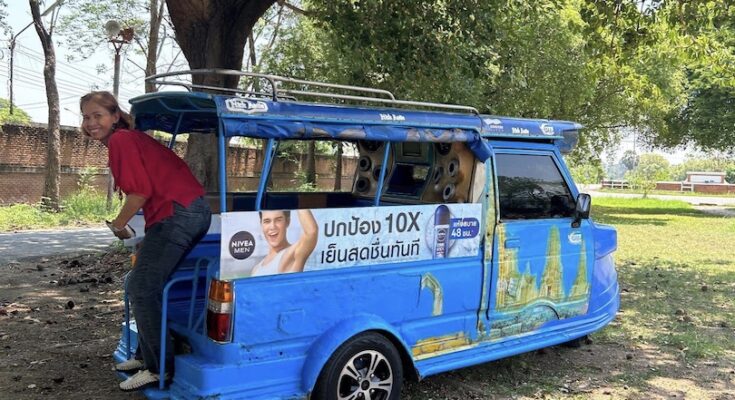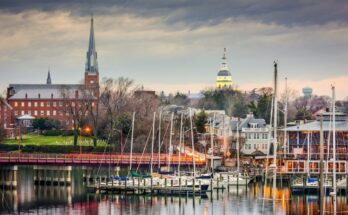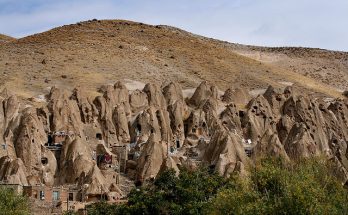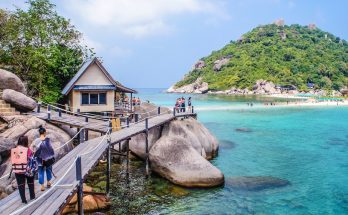It goes without saying that Bangkok is a fantastic base for day trips. Despite the popularity of the famous floating markets of Damnoen Saduak and the railway bazaar of Maeklong, I think that a visit to Ayutthaya is among the best excursions from the Thai capital.
If you’re not familiar with Ayutthaya, it’s a major historical site just 80 km north of Bangkok. Once standing as the capital of the Kingdom of Siam, Ayutthaya was a prosperous and cosmopolitan port city for over 400 years. In the latter half of the 18th century, Ayutthaya was burned down after an attack by the Burmese army.
What was left of the city was declared a UNESCO World Heritage Site in 1991, and most of the temples, palaces, and statues that remain make up the Ayutthaya Historical Park.
Today, Ayutthaya is a mecca for historians or anyone with a keen interest in exploring a different side of Thailand, as there’s more than just the impressive archaeological sites to be explored.
Below, you’ll find a rundown of how to go about planning a trip to Ayutthaya, what to see, and all my tried and tested tips and tricks.
In this post, we’ll cover:
Getting from Bangkok to Ayutthaya
Group tours to Ayutthaya from Bangkok are pretty commonplace, but travelling between the two cities independently is much easier than you might think. I opted to take the 90-minute train journey, which is a straightforward and easy-to-navigate trip.
You’ll have a choice of starting from either Hualamphong, Bang Sue, or Don Mueang train station, though the latter is likely too far outside of the centre for it to be a viable option for most travellers.
Bang Sue Station was close to my accommodation, so it was the most convenient starting point for me. Once you’ve taken a bus or taxi to your station of choice, head to the line-up of sales desks to purchase your tickets. The cheapest tickets are for third-class seats. These can only be bought in person and generally cost between 15 and 45 THB ($0.42 – 1.26).
Because the journey was relatively short, I went for the third-class ticket. However, it’s worth keeping in mind that these carriages don’t have air conditioning. If you’d prefer a little more comfort, go for the first or second-class tickets, both of which can be bought online in advance.
Naturally, this is a more expensive option, but ticket prices are usually still quite affordable.
Hiring a Driver and Planning Your Route

Once your train arrives at Ayutthaya Railway Station, you’ll quickly spot a bunch of local tour guides and drivers in tuk-tuks offering to take you around the various attractions in the city for a negotiable fee.
Most of these drivers bring you to a selection of sites of your choosing for a set number of hours, though some may have particular routes that they stick to. I was given a quote of 1,000 THB ($28) for five hours of sightseeing, and because I was splitting the cost with a friend, we decided not to bargain.
If your driver is happy for you to decide which spots you want to prioritize, he’ll provide you with a brochure of the city’s highlights and ask you to point out where you’re hoping to visit. Usually, English-speaking drivers will make suggestions about what the most efficient routes are, as some of the attractions can be a little far apart.
Unless you plan to rent a car or motorbike, hiring a guide for your visit to Ayutthaya is the easiest way to get around, and it’s the option most tourists go for.
Wat Yai Chai Mongkhon

Wat Yai Chai Mongkhon should be among the sites at the top of your must-see list. Translating to the “Great Monastery of Auspicious Victory,” this Buddhist temple is still in use to this day.
Originally named “Wat Pa Kaeo,” this temple was created during the 14th century at the site of the cremation of two Ayutthayan princes, following orders from King Ramathibodi I.
You’ll want to set aside at least 40 minutes to explore this spectacular site, as there’s so much to discover here. Between the vast brick stupas, the rows of small Buddha statues, and the famous reclining Buddha, your eyes will be drawn in every direction. Don’t miss out on the short climb to the top of the main temple, where you’ll be treated to views overlooking the entire complex.
Even though this is among Ayutthaya’s most popular tourist spots for both locals and foreign visitors, there’s still a sense of tranquillity in the air here. As it’s an incredibly sacred temple for Buddhists, it’s imperative to remain quiet and respectful while you’re here.
Your entry fee will set you back 20 THB ($0.56).
Wat Maha That

When you’ve finished up at Wat Yai Chai Mongkhon, ask your driver to head towards Wat Maha That, another hugely significant temple complex located just over a 5-minute drive away.
Wat Maha That was a royal temple and is considered to be one of the oldest in all of Ayutthaya, having likely been built around 1370. It’s believed that dozens of royal ceremonies and celebrations were held here up until the collapse of the Kingdom of Siam, as it boasted the Buddha’s holy relic.
The collection of stupas, prangs, and royal viharas (akin to a hall for worshipping) looks more like a small village than a temple, and the walking around the grounds is truly awe-inspiring.
You’ll notice that many of the Buddha statues are headless and have suffered irreparable damage since the grounds were burned in the 1700s. However, a particularly peculiar feature of Wat Maha That is the Buddha head that’s been wrapped amongst the roots of a bodhi tree.
There are information boards scattered throughout the area detailing the history of the temple. These are especially useful as many of the drivers typically bring you from place to place rather than guide you through each site.
50 THB ($1.40) will cover your entry fee and give you access to the umbrellas at the entrance. Trust me, you’ll be grateful for these as the midday sun arrives!
Wat Chaiwatthanaram

Around 10 minutes from Wat Maha-That is Wat Chaiwatthanaram, a magnificent temple perched alongside the Chao Phraya River.
Even at first sight, Wat Chaiwatthanaram resembles the Cambodian temple complex of Angkor Wat. This is primarily due to the order of King Prasat Thong, who wanted the temple built in a traditional Khmer style. As fantastical as it is, Wat Chaiwatthanaram is actually not part of the Historic City of Ayutthaya due to its location.
Much like the majority of Ayutthaya’s temples, a great deal of what once stood inside the grounds has been destroyed, but you’ll notice red brick structures of varying sizes, such as a 35-metre prang surrounded by numerous smaller formations.
Unfortunately, the information available here is quite limited, which meant that I only had my own prior research to work from. For this reason, I’d definitely encourage you to consider hiring a driver who also serves as a guide.
As was the case at Wat Maha That, tickets are required and cost 50 THB ($1.40) per person, and the umbrellas at the ticket desk are essential as there’s little to no shade.
St. Joseph’s Church

There are a bunch of other ancient ruins in Ayutthaya that are worth checking out, but I was keen to explore some other parts of the city while I was here.
After you’ve paid a visit to the above temples, ask your driver to make the short trip over to the nearby St. Joseph’s Church. It’s not that often that you’ll come across a Catholic church in Thailand, and this particular attraction was built by Parisian missionaries in the second half of the 17th century.
Interestingly, this very church was the first of its kind in Ayutthaya.
When battles broke out between the Siamese and the Burmese, the church was almost burnt to the ground before later being renovated and developed into the gorgeous Gothic-style yellow structure it is today.
When we visited, there were very few people around, and this riverside church felt like a world away from the often crowded temples of Ayutthaya. If you’re looking to get a little off the beaten path during your trip, St. Joseph’s Church is the perfect place to delve deeper into the history of the former capital.
Portuguese Settlement

Less than a 10-minute drive east of St. Joseph’s Church is among the most surprising and intriguing pockets of Ayutthaya.
Along the banks of the Chao Phraya River once stood a Portuguese settlement that’s thought to have had a population of almost 3,000 people.
After Portugal’s takeover of the Malaysian city of Malacca, officials learned of the city’s link to Ayutthaya and travelled to the Siamese capital to explain matters and make amends. Having been well received, members of the Portuguese military and hundreds of merchants began to settle on the outskirts of the city.
Once you arrive, you’ll notice a small museum on the grounds. This is a former church that has been built above a cemetery for former Portuguese residents. Many of the skeletons are entirely visible and are found throughout the museum, as are a bunch of display boards.
In all honestly, I didn’t think that the museum was particularly well-kept, but there’s an abundance of information here, which makes a visit here wholly worthwhile.
If you walk out to the water’s edge, you’ll be looking directly across the river at the former Japanese settlement. Should you have the time to spare, I think that this would be an excellent addition to any Ayutthaya itinerary.



